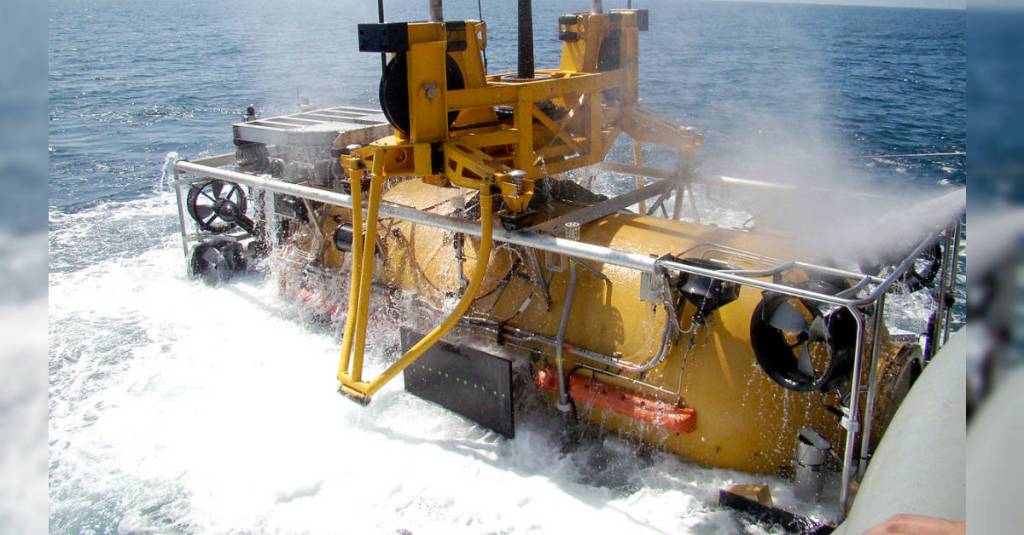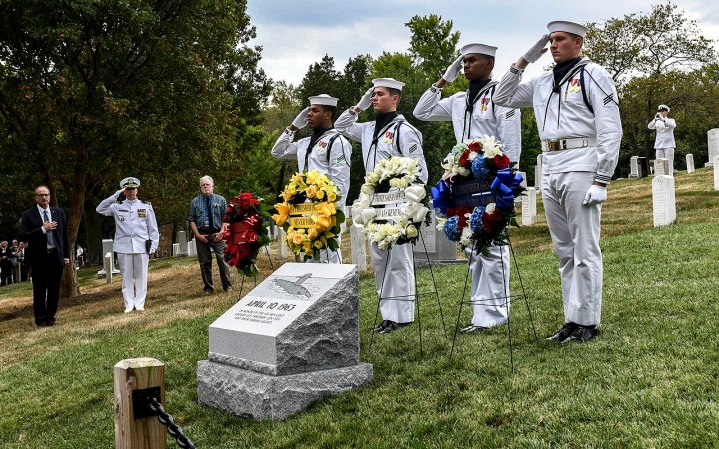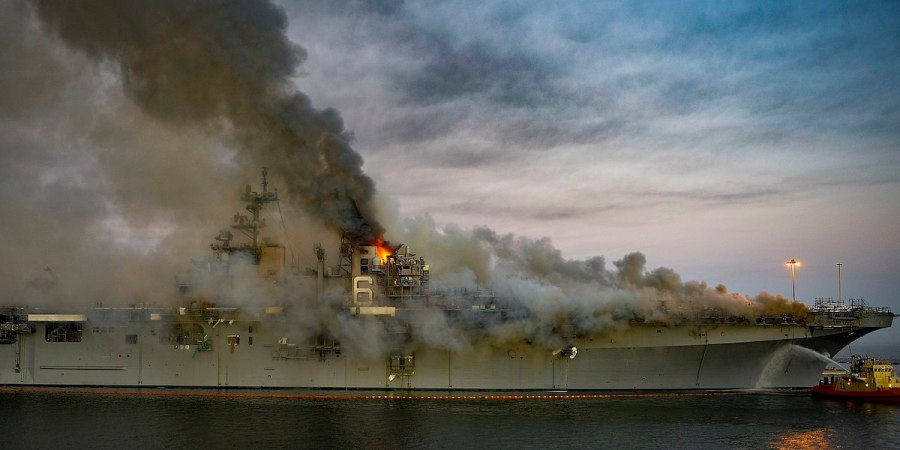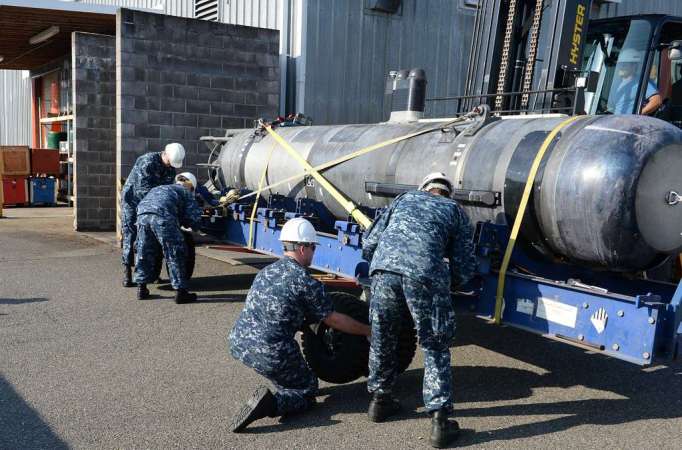The crews of submarines around the world face the very real and terrifying possibility that their submarine could fail and become stuck at the bottom of the ocean. While a surface vessel that suffers a mechanical failure at sea can be reached by most other surface vessels, something special is needed to rescue crews thousands of feet under the surface.
That’s why the Navy has the Submarine Rescue Diving and Recompression System, a three-part system that can reach a distressed submarine stuck 2,000 feet beneath the surface and recover the submariners inside. The SRDRS can be deployed anywhere in the world within a maximum of 72 hours.
Many civilian and military vessels can carry the SRDRS and the system can be rapidly installed on any appropriate ship, known as a “vessel of opportunity.” Once an appropriate vessel is identified near the rescue site, the SRDRS is flown, driven, or shipped to a port where it can meet the vessel. The Undersea Rescue Command, which operates the SRDRS, is stationed near both a port and a C-5 capable airfield so the unit can rapidly deploy anywhere in the world.

When the Navy crew and the system arrive at the submarine site, a diver wearing the Atmospheric Dive System 2000 is lowered to where the submarine rests on the bottom of the ocean. The ADS2000 allows a single sailor to dive to the sub and inspect it. If the diver sees signs that the crew are still alive inside the hull, he’ll signal the surface to let them know to launch the rescue mission. He’ll also begin removing any blockages or debris near the submarine’s hatches.

Next, the remotely-operated Pressurized Rescue Module, the Falcon, is lowered into the water and descends to the submarine. When it reaches the sub, it links with the hull on the sub and seals a skirt around the hatch. Then, it pumps air into the skirt, creating an open tube with breathable air. The sailors are then able to climb from their submarine to the PRM through the air chamber. Sixteen sailors can be carried by the PRM at once.
Once 16 sailors are safely aboard the PRM, it delivers them to the 32-seat Submarine Decompression Chamber where they are able to remain at their previous pressure until they reach the hyperbaric systems on the surface vessel. This prevents the decompression sickness they would face if they simply rushed to the surface.

Meanwhile, the PRM returns to the submarine to rescue another 16 sailors. Because the PRM has a tether that provides it power from the surface, it can ferry survivors from the submarine around the clock until it has rescued everyone. The Navy’s previous system, the Mystic-class Deep Submergence Resce Vehicles, used batteries that required charging between rescues.
The Mystic class of vessels was developed after the loss of the USS Thresher and her crew.
For distressed submarines at lower depths, usually 850 feet or less, the Navy can deploy the Submarine Rescue Chamber Flyaway System instead. The SRCFS is a diving bell that is lowered to the submarine via a cable attached to the sub by a diver. Sailors climb into the chamber and are raised to the surface.


























